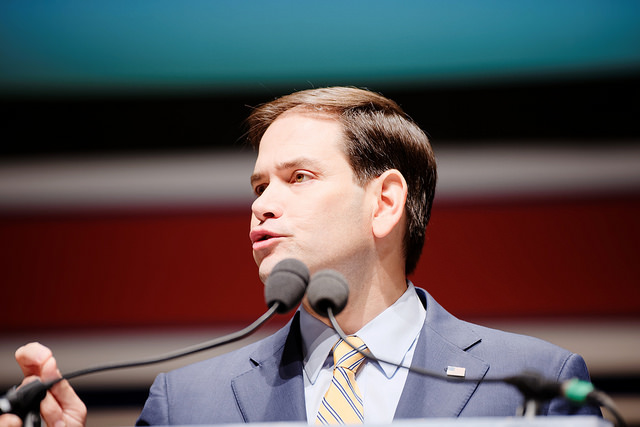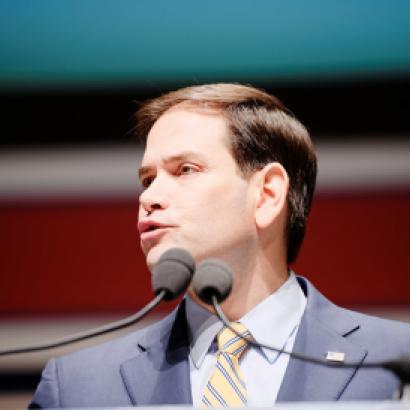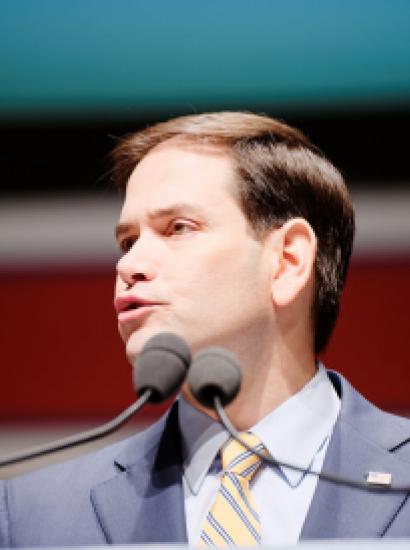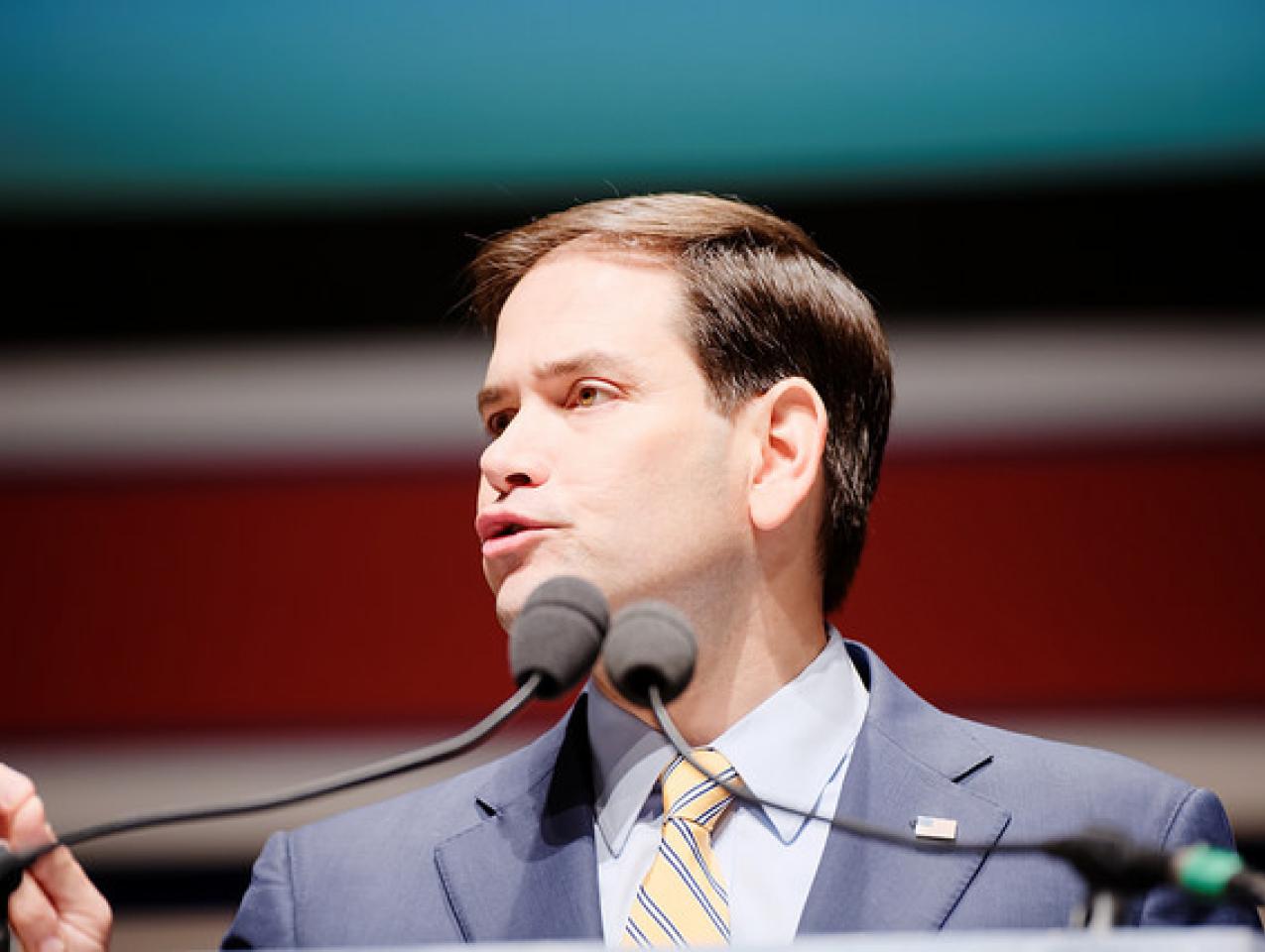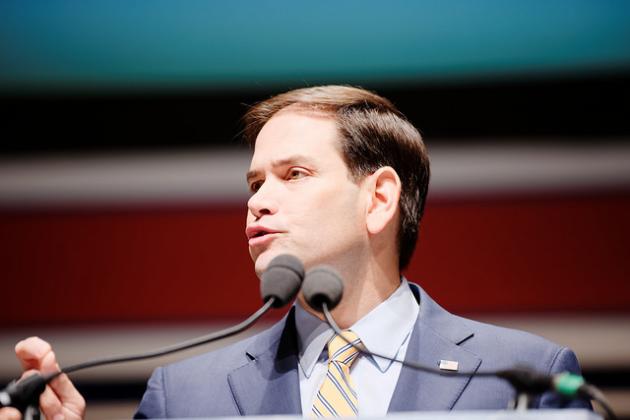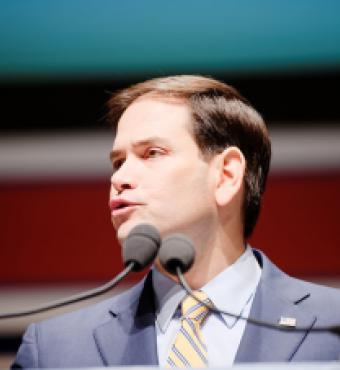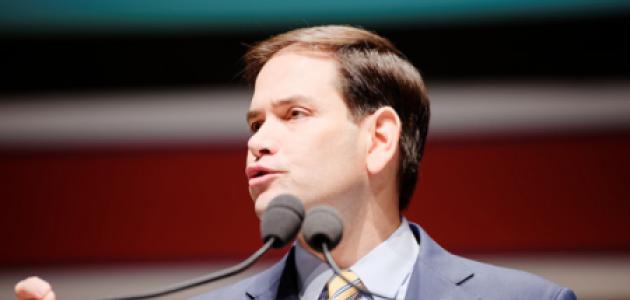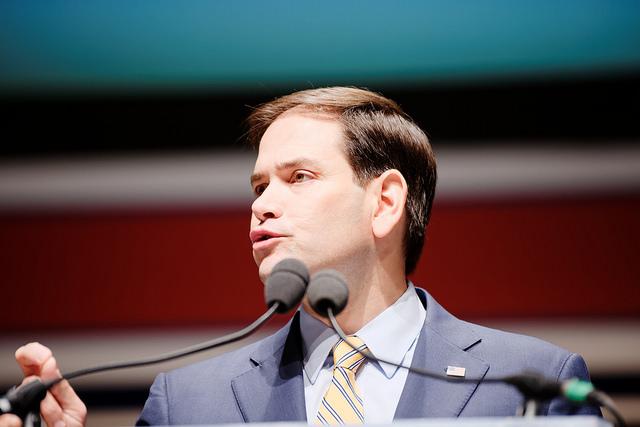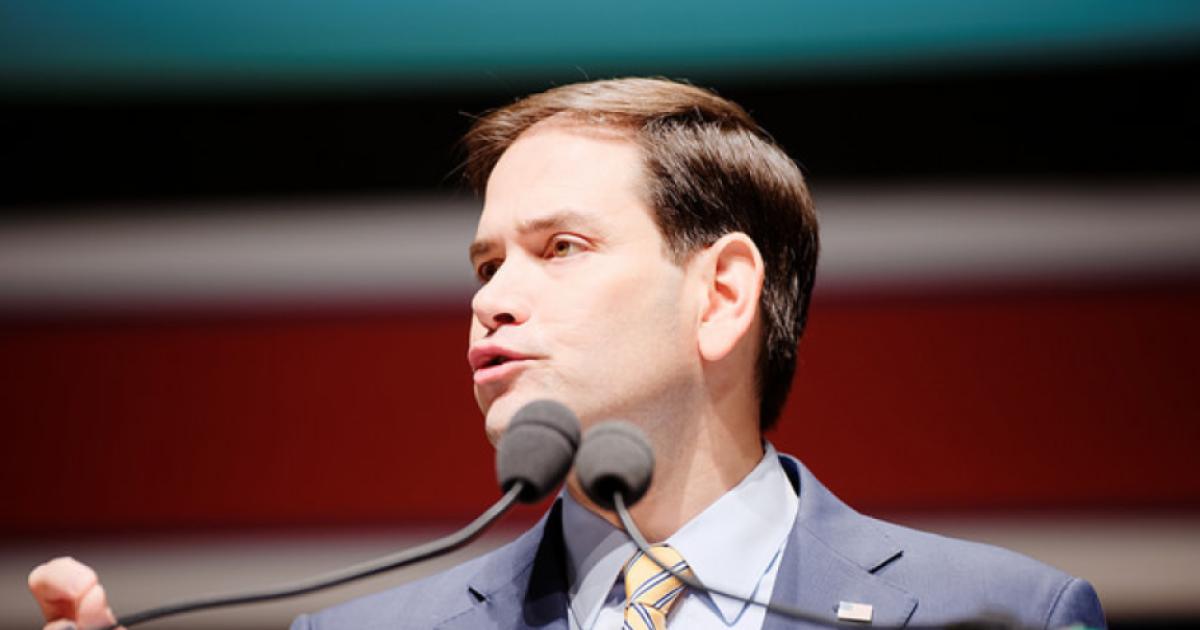- Politics, Institutions, and Public Opinion
Not that there was much in the way of a cease-fire, but America’s two political parties resumed their presidential hostilities over the weekend, Democrats caucusing in Nevada and Republicans voting in South Carolina’s GOP primary.
After earlier contests in Iowa and New Hampshire, these affairs west and south provided some clarity that the process so far has failed to deliver. Donald Trump, with two consecutive wins now, is the rabbit to chase in the GOP field. The party is now set up for ideological and stylistic clashes between Trump, Texas Sen. Ted Cruz, and Florida Sen. Marco Rubio for the party’s nomination—and, in a larger sense, its heart and soul. As for Hillary Clinton, her win in Nevada is the classic mixed blessing. She got the win she needed, though she squandered nearly all of last month’s 25-point lead in the process. If not for Sen. Harry Reid activating Nevada’s labor bloc at the last moment, Clinton might have lost.
And so we’ll soon enter March and a more advanced pace of primaries and caucuses. The question: What other surprises await? The 2016 election has so far taught us that several preconceived notions about presidential politics now seem prehistoric.
Those include:
Republican Obeyance.
Dating back to Ronald Reagan, the GOP’s nomination process has worked like this: with the exception of George W. Bush, the prize goes to the penultimate-guy-standing from the past election, a candidate with a long record of public service (preferably a governor), with formidable financial and field operations.
But in 2016, money hasn’t made a difference—not yet, anyway. Jeb Bush raised more than $100 million for his Right to Rise super PAC with two assumptions in mind: it would clear the field of strong rivals; and, like Mitt Romney in 2012, he’d have the resources to outlast the field. But neither scenario played out for Bush. Despite spending nearly $81 million in ads, he departed the race with only four delegates to show for his efforts.
Similarly, experienced candidates need not apply on the Republican side. Seven former and current GOP governors, who have a combined 63 years of executive experience, have now quit the race. In Iowa, three Republicans who’ve never held office—Trump, Dr. Ben Carson, and Carly Fiorina—received nearly six times more support than the gubernatorial trio of Bush, Chris Christie, and John Kasich—and twelve times more votes than Rick Santorum and Mike Huckabee, Iowa’s last two GOP winners.
The anti-establishment wave continued in New Hampshire and beyond. Trump was the first non-incumbent Republican since Ronald Reagan in 1980 to double-up the second-place finisher, lapping the field in almost every exit-poll category (age, ideology, education, income, gender).
The Fountain of Democratic Youth.
Then again, Republicans have a problem that Democrats usually envy in presidential elections: too many skilled applicants.
The Democratic field started with Hillary Clinton and four rivals with low profiles: Lincoln Chafee, Martin O’Malley, Jim Webb, and Vermont Sen. Bernie Sanders. It’s now down to Clinton, a 25-year presence on the national scene who insists she represents change, and Sanders, a 30-year presence on Capitol Hill with little to show in the way of transformative legislation.
It’s a serious departure for a party that venerates fortysomething presidential newcomers—from Barack Obama to Bill Clinton to John F. Kennedy. The last Democratic nominee closest in age to 68-year-old Hillary Clinton was 65-year-old James Buchanan in 1856. A former senator and Secretary of State, Buchanan would go on to become arguably the worst president in the nation’s history.
The Clinton-Sanders race highlights the Democrats’ regression during Barack Obama’s tenure: in the past three elections, the president’s party has surrendered 10 governorships, 14 Senate, and 69 House seats—the latter two numbers leaving Democrats at a congressional ebb last seen during Herbert Hoover’s presidency.
As Clinton struggles to connect with the Democratic base, her party finds itself coping with a problem it figured it could table until 2020 or 2024: aside from Hillary, what current prominent Democrat could win a national election?
Primaries As Speed-Dating.
In 2012, Mitt Romney didn’t lay claim to the GOP nomination until after Memorial Day. However, he had pulled away from the field in the first week of March.
In 2008, Obama likewise turned the corner in terms of secured delegates in early March; he’d go on to clinch the nomination a week after Memorial Day.
This year’s contests, especially on the Republican side, might turn out to be a departure from those races.
After Tuesday’s GOP caucuses in Nevada, Trump ventures into the March 1 “SEC primary” featuring a dozen states—a majority of them south or southwestern states that Cruz has been organizing for months now (including his native Texas).
From there, after four mid-size states vote on March 5, it’s on to an Ides of March showdown in Florida, Illinois, Missouri, North Carolina, and Ohio—all winner-take-all states, unlike the proportional “winners-take-most” states voting before March 15 (more on this in a moment).
Should Trump, Cruz, and Rubio split those states, the race will drag out for another six weeks into a series of contests in mid-to-late April. After that, if matters remain unresolved, it’s on to California and New Jersey, and then to a series of primaries held the first Tuesday in June. And after that, the party has less than six weeks to find a consensus nominee before the Republican National Convention in Cleveland.
Angry Voters Don’t Matter.
Pollsters and pundits have talked about the angry voter for so long that it’s become cliché. Both parties assume that angry voters will return to the fold (translation: vote for the establishment favorite) after venting their spleen at a Tea Party or MoveOn.org rally.
The 2016 election has taught us that voters are angry to the point where rational thinking no longer applies. How else can we explain the Republican momentum building behind Trump given that he has flip-flopped on abortion, has dissed the Pope, has suggested George W. Bush 43 lied his way into attacking Iraq, and has shown no interest in limiting the federal government’s scope or size?
And on the Democratic side: three times now, the party’s youngest voters have flocked to Sanders despite his being six years Clinton’s elder. Female voters have shunned a former First Lady and Secretary of State who could break two political glass ceilings this summer and fall.
In Iowa, where many GOP caucus-goers self-identified as evangelical, Trump received the second-most votes in Republican history—a curious affirmation of a thrice-married candidate who’s not much of a church-goer and struggles with his Corinthians. And in New Hampshire, Trump tied with Ohio Gov. John Kasich in New Hampshire among voters who believe illegal immigrants deserve amnesty, not too shabby for a candidate who wants to deport the 11 million illegal immigrants living in the United States. In South Carolina, Trump split the evangelical vote with Cruz. And he ran away from the rest of the field despite the fact that the number of South Carolinians saying he shared their values was in the single digits.
The Democrats’ Numbers Don’t Lie, or Do They?
As noted earlier, we’re soon in store for a frenzy of voting. Seventeen states hold their primaries in the first five days of March.
That adds up to 829 delegates on the GOP side and 1,193 for the Democrats. Keeping score at home seems easy enough, unless you’re trying to make sense of Democratic addition. Hillary Clinton tied Bernie Sanders in Iowa, lost by 22 points in New Hampshire, then came back and won in Nevada. Yet the Democratic delegate tally (warning: it changes almost daily) reads as follows after Nevada’s vote:
Clinton 502
Sanders 70
And on the Republican side, coming out of South Carolina:
Trump 67
Cruz 11
Rubio 10
Kasich 5
Carson 3
The reason there’s a vast divide between Hillary and Bernie are the superdelegates, who are Democratic officeholders and party insiders free to back a candidate of their own choosing. Republicans don’t have such a category.
Clinton leads among them, 481-455. In this election, the superdelegates are her true “firewall” against the “Feel The Bern” insurrection, more so than any primary or caucus result.
Here’s the superdelegate impact on the Democratic race. Let’s generously assume Clinton claims 80 percent of the 712 superdelegates attending the Democratic National Convention. She would have to muster roughly 1,812 of the remaining 4,051 delegates to win on the first ballot. In other words, a Clinton victory would be possible despite winning only 45% of the party’s elected delegates.
Ironically, the same Democratic National Committee that Sanders’ followers are convinced is in cahoots with the Clinton campaign (for example, relegating candidates’ debates to low-ratings weekend television) quietly killed a reform plan back in 2010 that would have required superdelegates to vote for their states’ primary winners. Instead, the DNC reduced the superdelegates’ share of the convention vote from 20 percent down to 15 percent in this election. If superdelegates prove the difference for Clinton, there won’t be much brotherly love on display at the party’s convention in Philadelphia.
A word of caution about this insider’s advantage: at one point early in the 2008 primaries, Clinton enjoyed a 3-1 super-delegate margin over Obama. But then Obama began to pick up momentum. By June, he held a 2-1 superdelegate advantage over Hillary. Free to change sides before the national convention, party insiders swapped her out for the new, shinier model.
Not That The GOP Math Is Clearer.
Now that Trump has won in South Carolina, some pundits would have you believe that he is an unstoppable force. That’s not the case, as there’s yet to be a primary in which nearly two-thirds of the field didn’t vote against him.
However, there is a problem for Marco Rubio: as long as he and Kasich are drinking from the same well of establishment-preferring voters, each will be hard-pressed to reach the 15-20 percent threshold for delegates in the upcoming winners-take-most states.
Kasich has given no indication that he plans to leave the race before Ohio votes on March 15. Keep an eye on what Jeb Bush does in the next two weeks. He may be willing to put his campaign machinery behind Rubio so as to deliver Florida and derail Trump.
Thanks to the number-crunchers at FiveThirtyEight, we have an idea of what Republican progress would look like in the weeks ahead: Cruz needs over 540 delegates and Trump needs nearly 460 heading into the March 15 primaries, in order to stay on pace for the nomination; Rubio needs about 360 delegates to keep pace. But that’s assuming Rubio doesn’t suffer another debate meltdown this Thursday in Houston. Or that Kasich and Ben Carson don’t drop out of the race. Anything is possible in this election.







